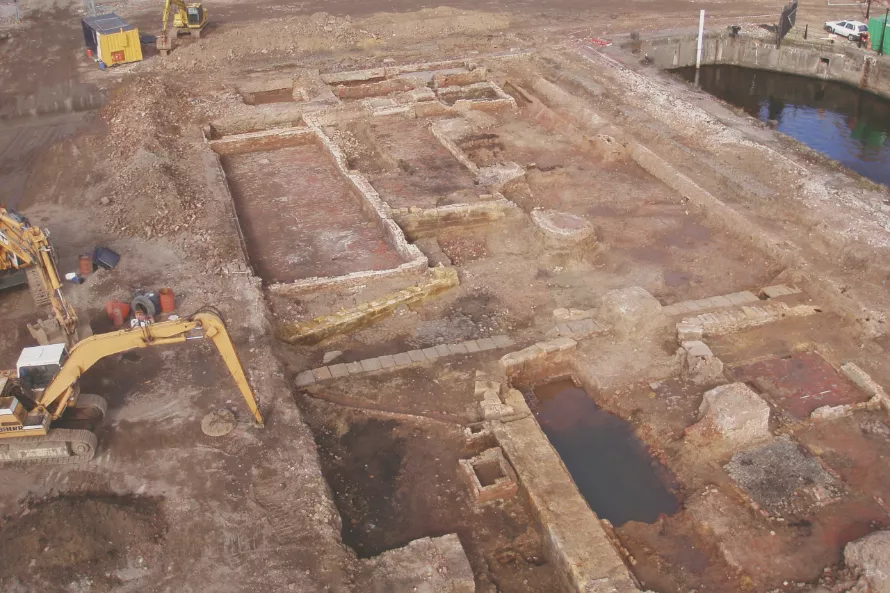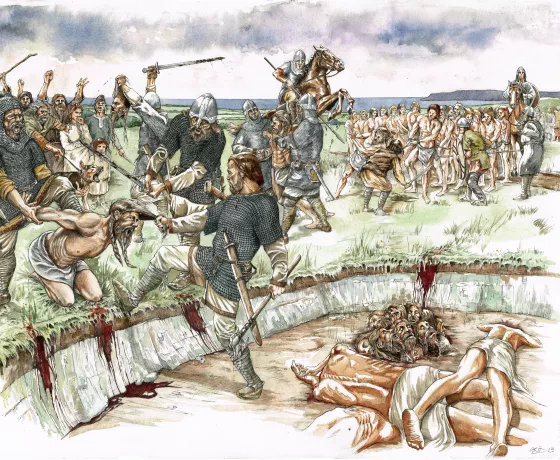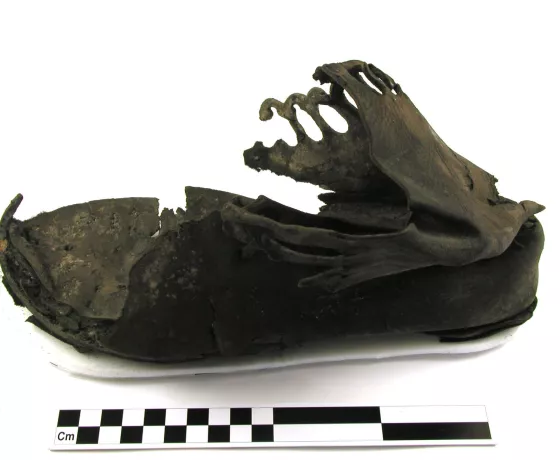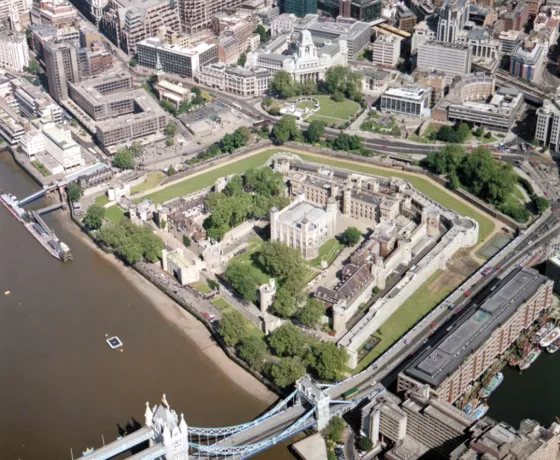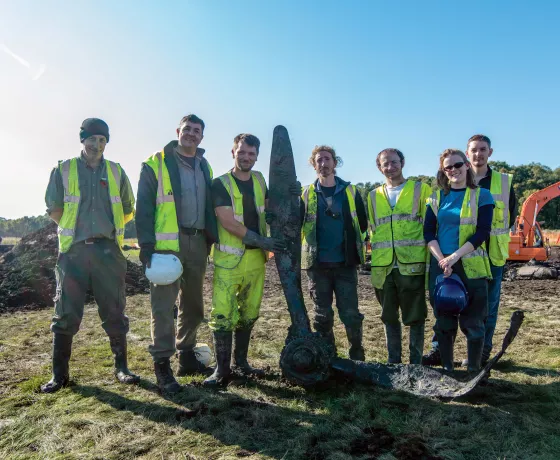In November we explored an enigmatic site whose history spanned the Late Iron Age and most of the Roman period. We revisited our excavations at the historic docklands in Liverpool and. travelling further north, the Roman origins of Carlisle. We then returned to Oxford for the excavations at the former site of the Radcliffe Infirmary which produced great insights into healthcare in the early modern period and beyond.
The evolution of a Late Iron Age site into the Roman period
This #OAat50 highlight is a fascinating and enigmatic Late Iron Age and Roman site at Cressing, in Essex.
In 2020, just a couple of weeks before the first lockdown, Oxford Archaeology started excavations at Cressing ahead of construction for a new housing development. The Cambridge team discovered a large ‘D’-shaped enclosure situated on a gentle hill overlooking the Brain Valley.
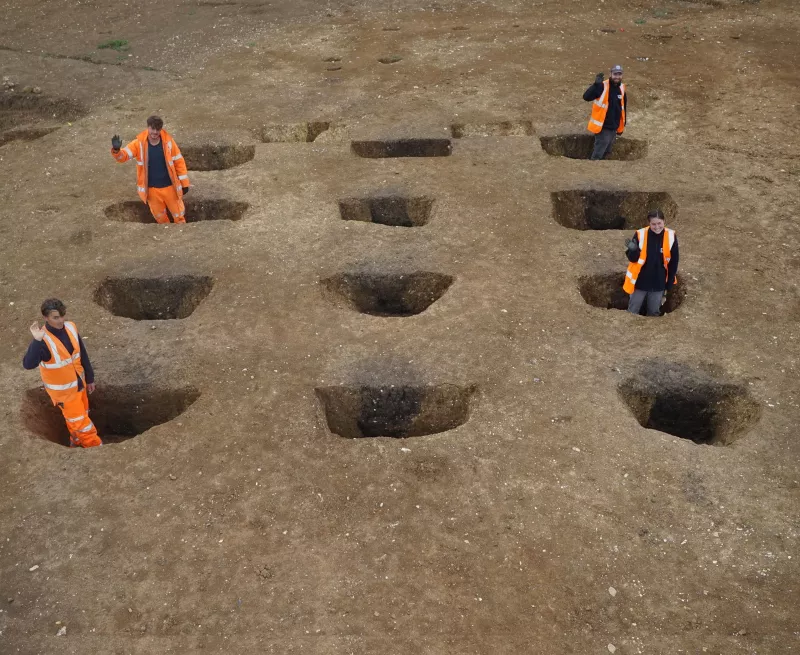
It contained two arcs of roundhouses positioned along the edges, with larger structures positioned more centrally and dating to the 1st century BC to the early 1st century AD.
Evidence from the site suggests that it was an important, high-status settlement at the centre of the local community in the decades before and after the Roman conquest. This can be seen through the recovery of moulds used in the production of coinage, imported pottery from the continent and the discovery an exceptionally large 12-post structure which probably represented a giant grain store. It is possible that the settlement comprised a subsidiary powerbase of the Catuvellauni or Trinovantes – the Late Iron Age tribes that inhabited Essex around the time of the Roman conquest.
What makes the Cressing site so special is that, during the Roman period, its function appears to have shifted: finds that are usually associated with domestic occupation decline, while there was an increase in the deposition of objects that were probably votive offerings. These objects were concentrated particularly in one area of the site within the original Iron Age enclosure, which suggest there might have been a shrine there. Hundreds of metal objects were recovered from there, including coins, hairpins, beads, rings, and a copper alloy cockerel, an animal associated with the cult of the god Mercury. The 125 brooches also found there indicate that votive activities continued into the mid 3rd century, long after the settlement had been abandoned. Thirty-three of these brooches are associated with the Roman military, suggesting Roman soldiers may have been garrisoned near to the site during its decline.
Liverpool's historic waterfront
This #OAat50 highlight is an exceptional project we undertook between 2006 and 2008 in Liverpool.
Liverpool’s historic waterfront is internationally significant, crucial to an understanding of the eighteenth- and nineteenth-century development of world trade, commerce, and the mass movement of people.
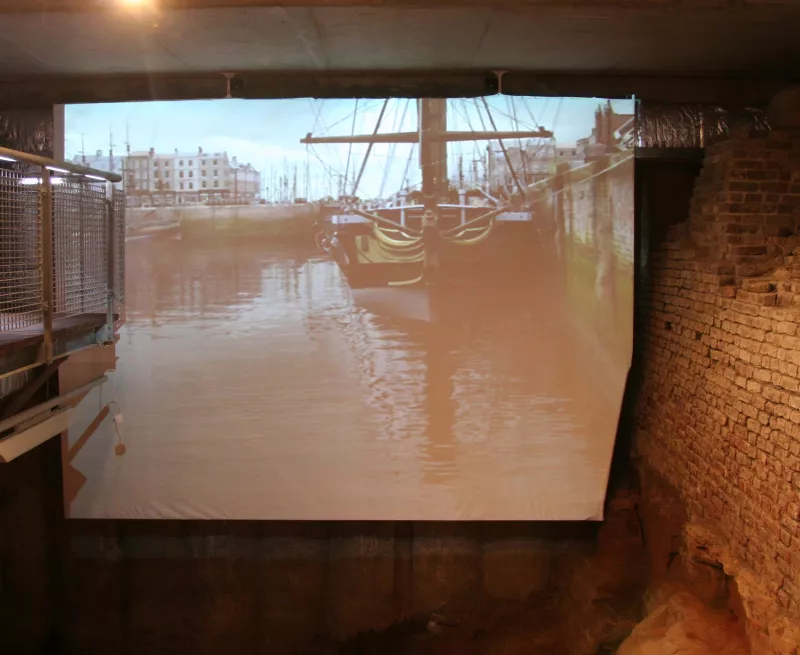
The town was founded in 1207 and became important through commerce with Ireland. The world’s first commercial wet dock was built in 1715 (the Old Dock) and was so successful that the dock complex rapidly expanded, encouraging Liverpool’s prominent position in the Slave Trade.
Oxford Archaeology’s Lancaster office undertook an extensive programme of archaeological work on the waterfront between 2006 and 2008. This revealed the immense land reclamation that was undertaken in the eighteenth and nineteenth centuries to allow the docks to expand. It also identified the wall of Manchester Dock and associated slipways and examined the development of Nova Scotia and Mann Island, a small community on the reclaimed land, historically known as ‘Sailor-town’. In addition excavations were carried out on Duke’s Dock, Rochdale Basin, Queen’s Dock entrance lock, Canning Dock, and at Pier Head, as well as looking at the footprint of the extension to the Leeds and Liverpool Canal.
The work provided a unique insight into the development of dock engineering from its beginnings at the Old Dock, dug into bedrock with a brick superstructure, through to building in stone to provide more sustainable walls, to pioneering designs such as those of Jesse Hartley, who developed system of interlinking small docks. The culmination of the project was the publication of Archaeology at the Waterfront: Investigating Liverpool’s Historic Docks and the design and development of the visitor centre within the Old Dock which runs tours of the remains several times a week.
Discoveries on the edge of the Roman Empire
This #OAat50 highlight takes us to the very edge of the Roman Empire...
Carlisle Castle stands on the site of a Roman fort founded in the autumn or winter of AD 72/3 by the invading Roman army and named Luguvalium. The OA team made some amazing discoveries there that offered amazing snapshots of life on the Roman frontier.
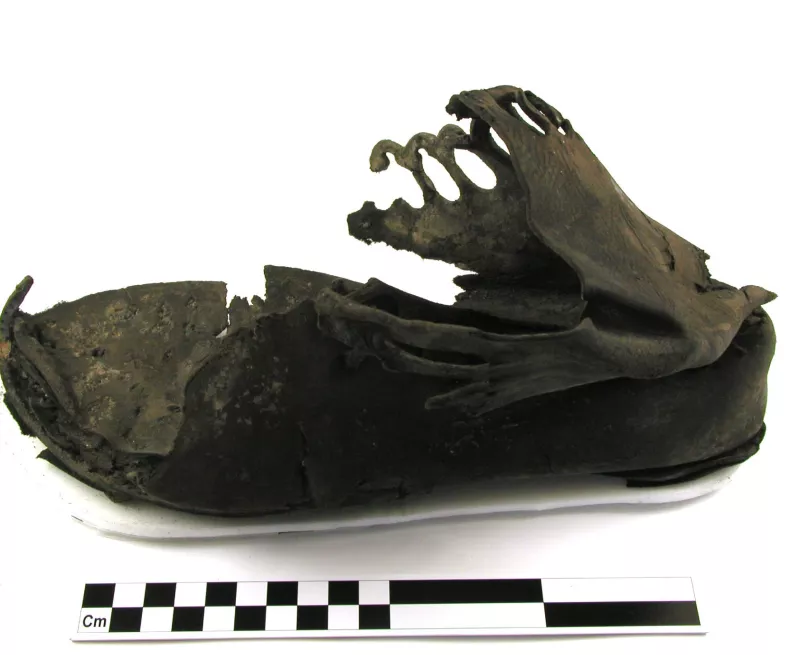
Excavations in 1998-2000 found a wealth of information about its occupation through to the end of Roman governance and beyond.The site is particularly significant as the remains were waterlogged, which allowed the survival of not just buildings but the artefacts of people’s daily lives. These included items made of more durable materials such as metal and glass, including exceptional examples of Roman armour, but also the rare survival or everyday organic finds.
These included leather items such as shoes, pieces of tent, and bone gaming pieces and handles, and wooden items such as drains, barrel and box bases, bowls, scoops, a baker’s peel, and combs. Pieces of leather saddle covers were also found, but we also had an unusual wooden item which appeared to have come from the rigid core of a saddle which the cover would have been stretched over. This wooden core had four leather-covered horns which helped us to understand how the rider gripped the saddle during movement and combat, as one of the few things Romans didn’t invent was the stirrup!
Perhaps some of the rarest survivals of all though, were those simple utilitarian objects, presumably very numerous in the past including part of a table leg, a plasterer’s float, and this amazing survival of a Roman ruler with inches and half inches!
Early modern healthcare in Oxford
For this #OAat50 highlight we return to historic Oxford, where a major excavation at the site of the old Radcliffe Infirmary burial ground revealed fascinating insights into hospital care, surgery and burial during the Industrial Revolution and the Enlightenment.
The excavation was undertaken between 2013 and 2014 under a faculty from the Diocese of Oxford for the Estates Department, University of Oxford, in advance of the construction of the Blavatnik School of Government on Walton Street.
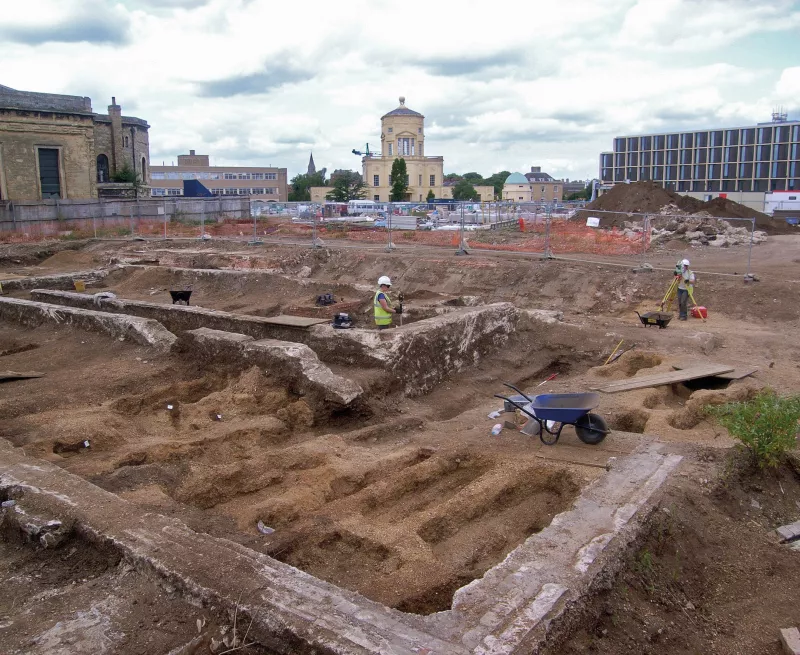
The earliest identified activity was a late Iron Age pit and may be rare evidence of rural settlement of this date in the area. An Anglo-Saxon boundary ditch was also found, as well as 17th/18th century quarry pits which had probably been dug for gravel, possibly for the construction of the infirmary or for building and maintaining Walton Street.
All other archaeology found during the excavation relates to the burial ground which had served the hospital from its foundation in 1770, until 1855. Comprising a large group of human skeletons, coffin remains and grave furnishings, it is one of the largest 18th/19th century hospital assemblages to have been recovered from Britain.
A total of 348 individuals was found in graves which had been laid out in neat rows, either side of a footpath. A few graves had been dug in a disorganised fashion into the tops of 17th/18th century quarry pits. They may refer to victims of an epidemic such as cholera, although evidence for cause of death was not visible on the skeletons. Small pits, dug into the tops of graves or alongside graves, were also found and contained surgical waste, such as amputated limbs.
None of the graves had surviving markers and no plans of the burial ground survive, so practically all the individuals are unidentified. One male individual, from Ireland, was identified from a surviving nameplate on his coffin lid. He was killed while working as a fireman on the railway and his skeleton had extensive wounds from a massive impact to the spine and chest.
Other examples of trauma were common amongst the skeletons and are testament to the hazardous nature of working-class lives during this period of industrialisation. Accidents involving trains, threshing machines and printing machines were the most common, reflecting the influence of the railway, the printing press and farming. These would have all been activities practised in the area around the hospital with the Oxford stations (Oxford had two at this time) lying half a mile away, the University Press directly across the road from the hospital and the open fields of North Oxford surrounding the hospital.
Much of the trauma seen in the excavated bones concerns individuals who would have been admitted as emergencies, many of them with incurable wounds and/or infection and for whom surgery was the only option. Evidence of surgery primarily included amputations, reflecting a focus on procedures which were quick and accurate, in keeping with the practices of the era prior to the introduction of anaesthesia.
Upon their arrival, Radcliffe patients were taken to the attic where the accident ward, operating theatre and (later) surgical wards were located. With no anaesthesia, they would have undergone surgery either awake under restraint, or intoxicated with alcohol. In one remarkable example, the base of a child’s spine appears to have been removed when the individual was still alive, possibly to remove a cancerous growth. An invasive and risky operation, it reflects advanced medical intervention for its time which would have required a level of detail and time that was beyond most 18th/19th century surgical ability.
The excavated bones had more examples of patients who had survived their surgery, than had died on the operating table. However, post-operative infections leading to sepsis were common and often fatal. Coupled with the fact that antisepsis and sterilisation did not exist, hospitals were breeding grounds for disease due to overcrowding and lack of sanitation. The Radcliffe was no exception to this, with infection (such as, tuberculosis and syphilis) being the most common type of disease seen on the excavated bones.
Several excavated individuals had undergone an autopsy, whereby the tops of skulls and/or rib cages had been sawn open. There was also some evidence for the removal of body parts by anatomists, to be used as teaching specimens by Oxford University’s medical students. Anatomisation of unclaimed hospital patients was legally permitted with the passing of the Anatomy Act in 1832 but is known to have been taking place illegally in the country before this date. It is not known whether the Radcliffe examples pre- or post-date this legislation.

